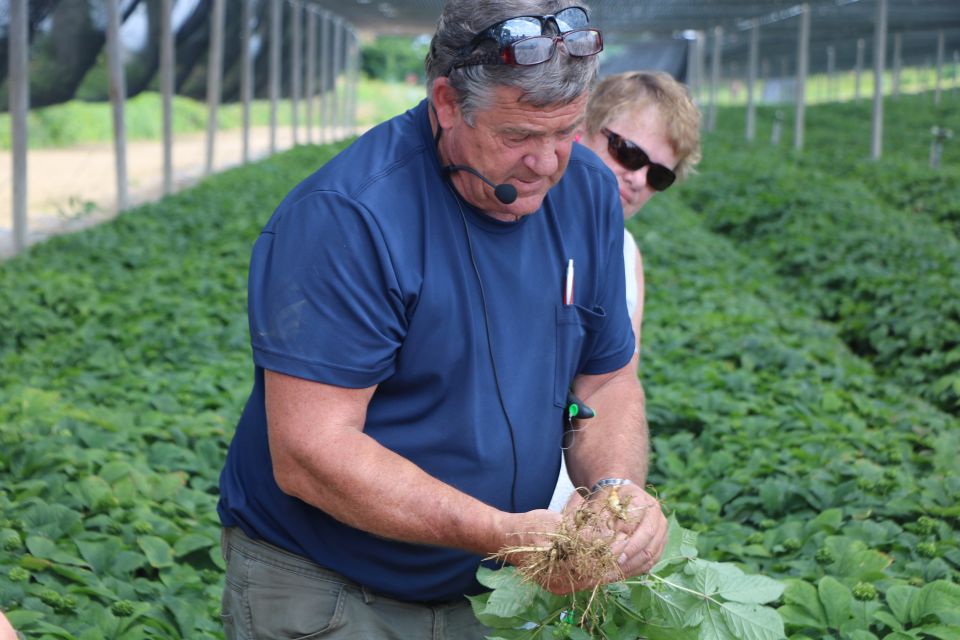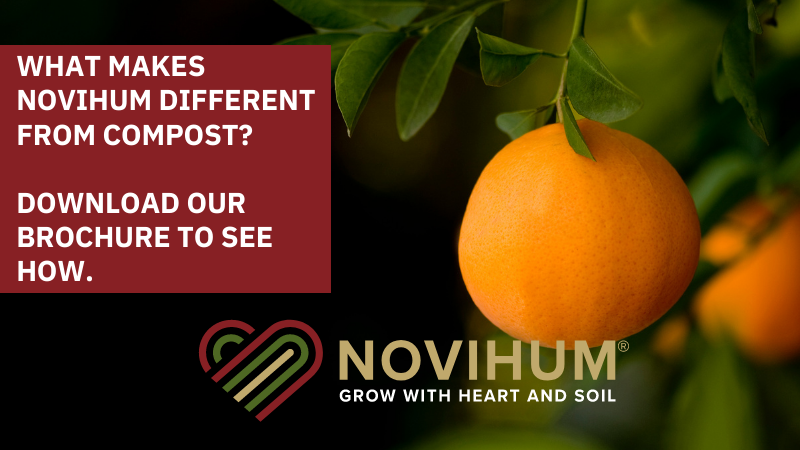Now for Something Completely Different in Fruit Production: Ginseng

Jim Lewis shows IFTA tour-goers what ginseng looks like during a stop at Northland Ginseng Farms Inc. (Photo: Christina Herrick)
Everyone in farming thinks they’ve got it tough. And to be fair, you do. It’s no easy task putting your fate into the hands of Mother Nature. But what would you do if you couldn’t replant on your site ever again?
That’s precisely what ginseng growers face. The reality of that fact hit me hard during the International Fruit Tree Association’s summer tour in Ontario, Canada.
We see a lot of orchards on these tours, and orchard visits truly are my favorite part of what I get to do. But, IFTA has also been doing a fantastic job of identifying a crop unique to the region we’re in and arranging a visit just so we can see how the other half lives and gain a greater appreciation for orchard production.
So, we got a chance to learn about ginseng production firsthand from Jim Lewis of Northland Ginseng Farms, Inc. in Simcoe, Ontario, Canada. I left with an appreciation for what ginseng farmers must do to survive and the remarkable situation ginseng farmers find themselves in.
Ginseng is the most valuable field crop grown in Ontario, with an estimated $130,000,000 farm gate value, according to 2012 figures. It’s also a complicated crop as it’s highly regulated, takes four or five years before harvest, and of course the whole fact that sites can’t be reused after harvest that I’ll get to in a moment.
Many fruit and vegetable growers in Ontario like purchasing land from a ginseng farmer because the growing area is weed-free. It’s a four-to-five-year process to get the ginseng plantings to full maturity. Since the ginseng root is the primary part of the crop, ginseng farmers also use a pre-plant fumigant. Ginseng is susceptible to many soil-borne diseases, including Cylindrocarpon root rot.
What shocked me, though, is that once a ginseng planting is harvested, that land cannot be replanted in ginseng for at least 50 years. The roots are that susceptible to replant disease.
“We’re running out of land,” Jim Lewis told us.
And, he’s not kidding. Imagine if you constantly had to not only renew your crops but also seek out new ideal places to plant!
Ginseng is grown under shade cloth, which can be damaged with severe hailstorms. But the plant is most at risk for injury with spring frosts. Plants are harvested in September or October, and Lewis needs about 60 people for the task. Automation isn’t an option, as it can damage the roots. Roots are washed and graded, then dried in kilns before being shipped to Asia.
Ginseng farmers also face tough competition from Chinese growers, who grow younger roots more cheaply.
Now, it’s not all bad news. A few years ago ginseng growers were getting around $45 to $50 pounds for dried ginseng, although it’s closer to $25 to $34 a pound currently. And Lewis said his production target is around 4,000 pounds.










